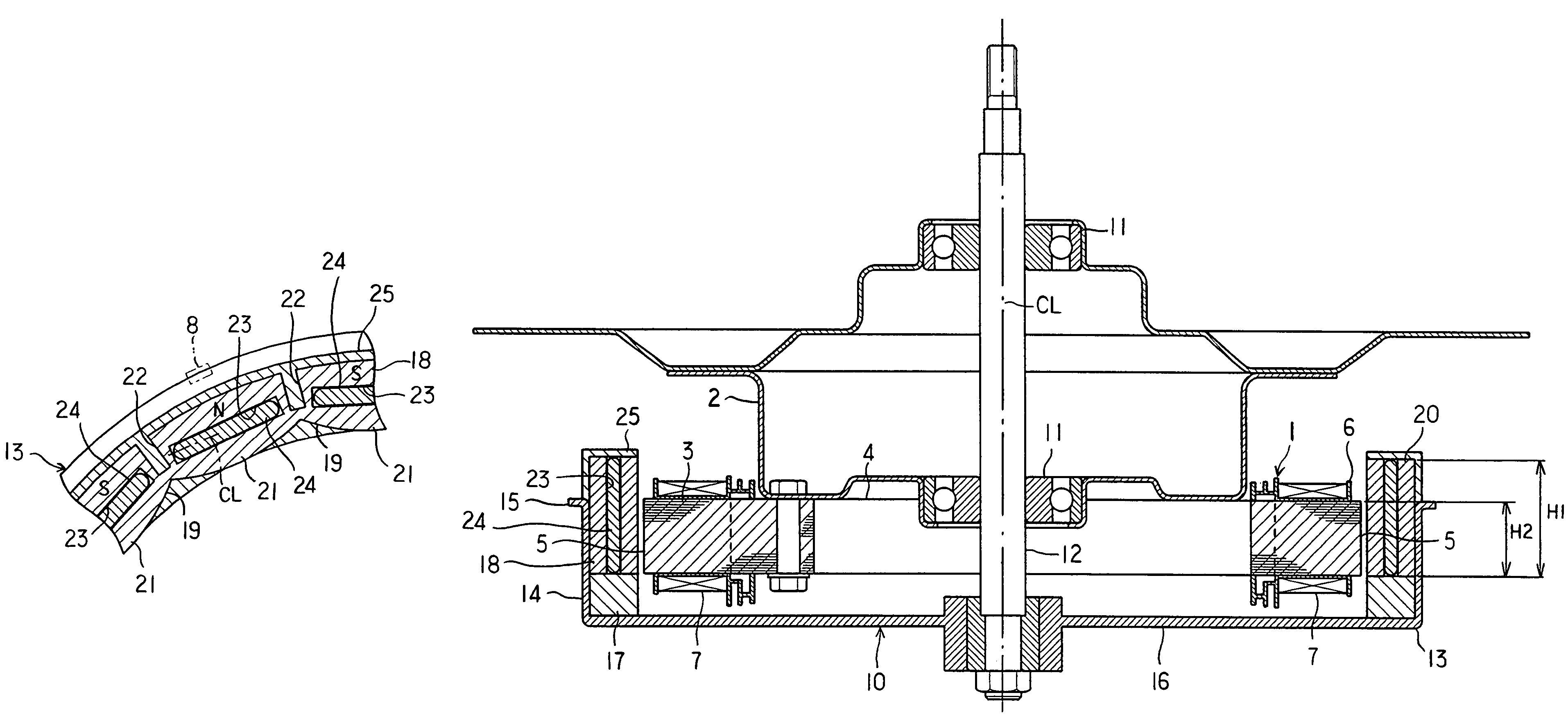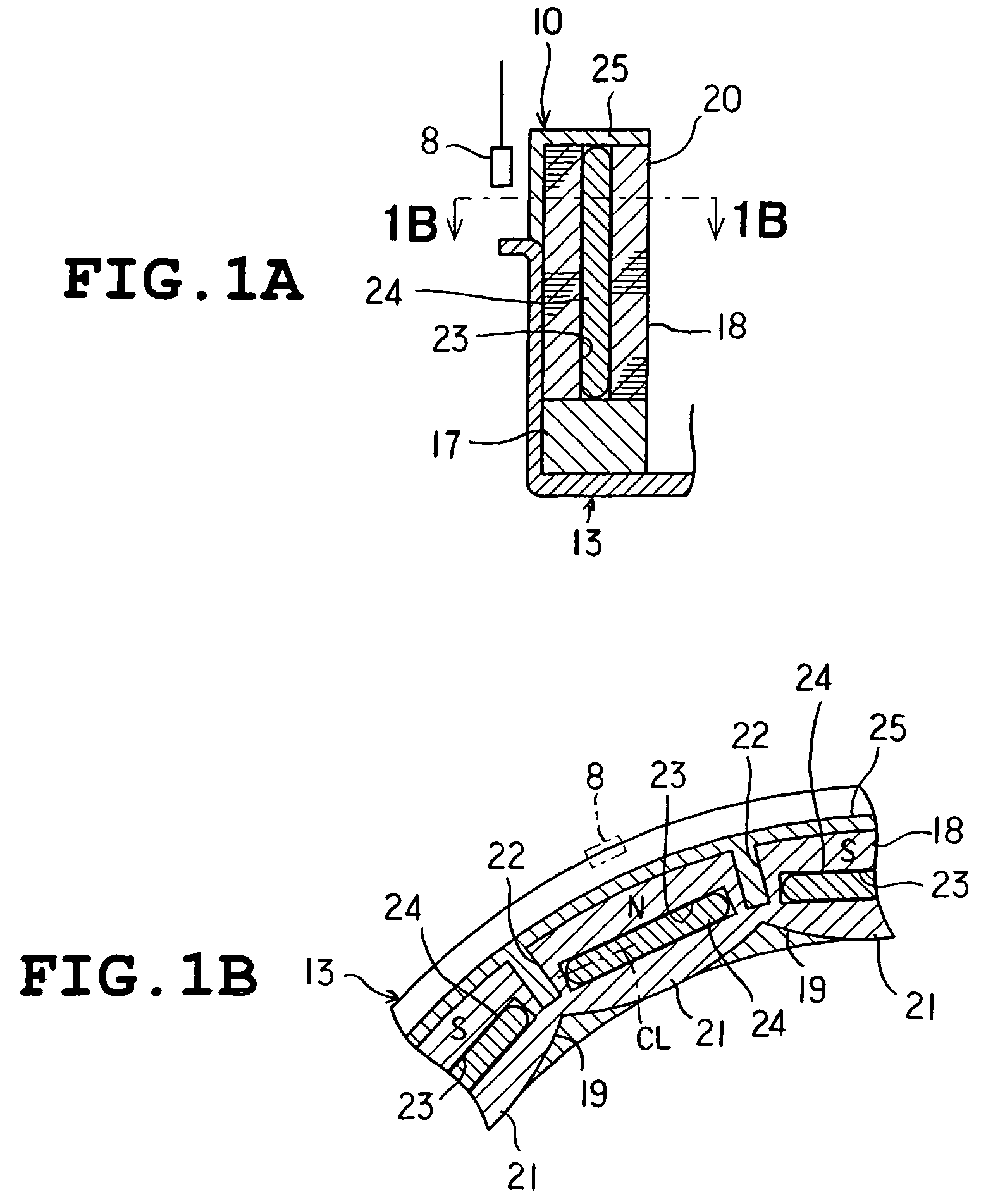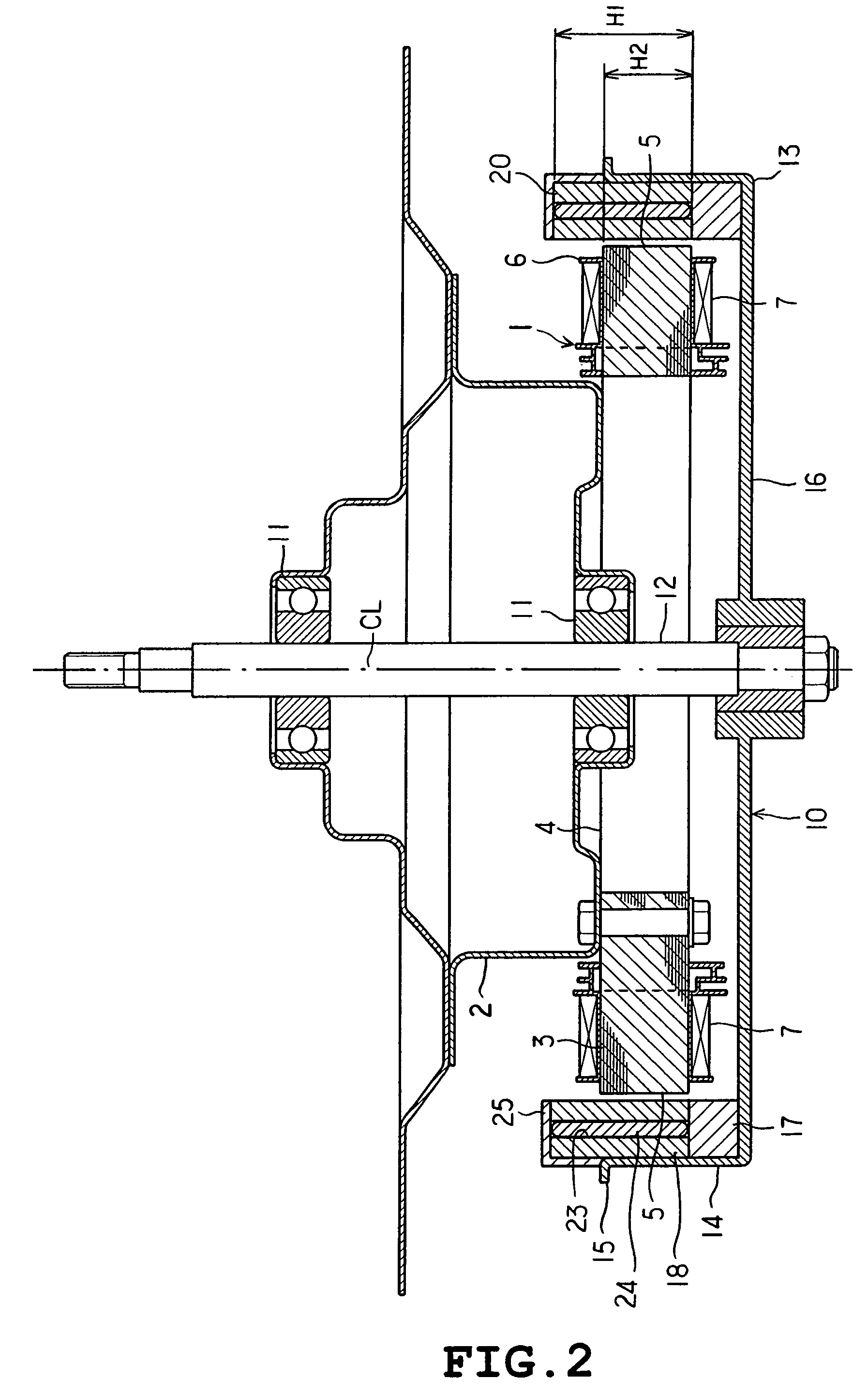Rotor of motor
a technology of rotor and motor, which is applied in the direction of rotating magnets, magnetic circuit rotating parts, synchronous machines with stationary armatures, etc., can solve the problem of insufficient positional detection by the position sensor
- Summary
- Abstract
- Description
- Claims
- Application Information
AI Technical Summary
Benefits of technology
Problems solved by technology
Method used
Image
Examples
first embodiment
[0023]FIGS. 1A, 1B and 2 show a first embodiment of the invention. Referring first to FIG. 2, a stator 1 includes a base 2 and a stator core 3 screwed to the base. The stator core 3 is formed by axially stacking a number of magnetic steel sheets and includes a generally cylindrical yoke 4 and a plurality of radially extending teeth 5. An insulating layer 6 made of a synthetic resin is formed on a surface of the teeth 5. Phase U, V and W coils 7 are wound on the insulating layer 6. An arm-shaped holder (not shown) extending toward the outer periphery is fixed to the insulating layer 6. A position sensor 8 comprising Hall elements is fixed to the holder as shown in FIGS. 1A and 1B.
[0024]The rotor 10 will now be described. Two outer rings of bearings 11 are fixed to the base 2 as shown in FIG. 2. A rotational shaft 12 is fixed to inner rings of the bearings 11. The rotational shaft 12 extends along a central axis of the stator core 3 and has a lower end to which a rotor frame 13 servin...
second embodiment
[0036]A second embodiment of the invention will be described with reference to FIG. 3. The second embodiment differs from the foregoing first embodiment in the following respects.
[0037]Each rotor magnet 24 has the axial dimension H3 or height set so as to be smaller than the axial dimension H1 of the rotor core 18, as shown in FIG. 3. Each magnet inserting portion 23 has an inner upper end defined with a space 26 where no rotor magnet is provided. Each space 26 is formed with a closure 27 made of a synthetic resin, so that each rotor magnet 24 is confined in the magnet inserting portion 23 by the closure 27. Molten resin is poured into each space 26 in the forming of the core base 17 and the insulating layer 25, so that the closures 27 are formed integrally with the core base and the insulating layer. The position sensor 8 is disposed so as to be spaced away from the closures 27, thereby axially opposing the outer circumferential face of the protrusion 20.
[0038]According to the seco...
third embodiment
[0039]A third embodiment of the invention will be described with reference to FIGS. 4A and 4B. The third embodiment differs from the first embodiment in the following respects.
[0040]A plurality of magnetic walls 28 corresponding to the protrusions are formed on the upper end of the rotor core 18 as shown in FIGS. 4A and 4B. The magnetic walls 28 are adapted to come into contact with the outer circumferential faces of the rotor magnets 24. The position sensor 8 is axially opposed to upper ends of the magnetic walls 28.
[0041]According to the third embodiment, the protrusion-like magnetic walls 28 are formed on the outer circumferential faces of the rotor magnets 24 in the axial end of the rotor core 18. As a result, the magnetic flux tends to reflow circumferentially. Moreover, the magnetic walls 28, rotor magnets 24 and rotor core 18 have the respective upper ends located at different levels. Accordingly, since the magnetic flux for the position sensor 8 tends to axially reflow easil...
PUM
 Login to View More
Login to View More Abstract
Description
Claims
Application Information
 Login to View More
Login to View More - R&D
- Intellectual Property
- Life Sciences
- Materials
- Tech Scout
- Unparalleled Data Quality
- Higher Quality Content
- 60% Fewer Hallucinations
Browse by: Latest US Patents, China's latest patents, Technical Efficacy Thesaurus, Application Domain, Technology Topic, Popular Technical Reports.
© 2025 PatSnap. All rights reserved.Legal|Privacy policy|Modern Slavery Act Transparency Statement|Sitemap|About US| Contact US: help@patsnap.com



